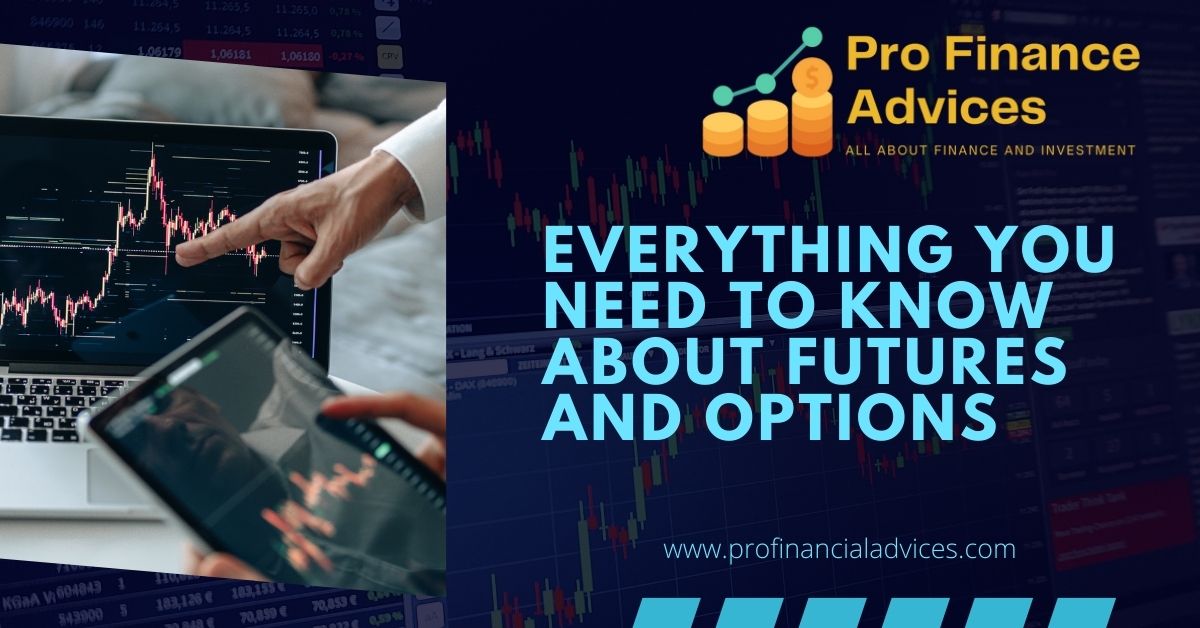Everything You Need To Know About Futures And Options
Futures and options are two of the most important financial instruments that investors use to secure their portfolios. In a nutshell, these two derivatives allow investors to hedge their positions, but they can also be used as trading instruments. This article explains the basics of futures and options, including their features and their various associated strategies. By the end of this article, you will have a good understanding of these instruments and how they can help you diversify and manage your portfolio.
What are Futures and Options?
Futures and options are derivative instruments, which means that their values are based on the values of other assets. Futures and options are contracts that give traders the right, but not the obligation, to buy or sell a certain asset at a predetermined price, for a specific period of time. A futures contract obligates the buyer to purchase the asset at the agreed upon price on a specific date, while an option gives the owner the right, but not the obligation, to purchase the asset at the predetermined price.
The price of the futures or options contract is determined by the prevailing market conditions, such as supply and demand. If the price of the underlying asset rises, the price of the futures or options contract will also increase. On the other hand, if the price of the underlying asset falls, the price of the futures or options contract will decrease.
The Different Types of Futures and Options
Futures and options can be divided into two categories: exchange-traded products and over-the-counter (OTC) products. Exchange-traded products are traded on organized exchanges, such as the Chicago Board Options Exchange (CBOE) and are regulated by the Commodity Futures Trading Commission (CFTC). On the other hand, OTC products are traded directly between two parties and are not regulated by any regulatory body.
Examples of exchange-traded futures and options include stock index futures and stock options, commodity futures and options, currency futures and options, and interest rate futures and options. Some of the most popularly traded OTC products include currency forwards and options, as well as customized and exotic options.
Advantages and Disadvantages of Futures and Options
Futures and options provide investors with a wide range of benefits, such as hedging against price risks, diversifying portfolios, and profiting from price movements without having to own the underlying asset. However, these instruments come with their fair share of risks.
One of the main advantages of futures and options is their ability to reduce price risks. Hedging is a technique that involves taking an opposite position in the market, to offset potential losses from an existing position. In the case of futures, investors can hedge against price fluctuations in commodities and other assets by taking an opposite futures contract. The same can be done with options by purchasing an option that is the opposite of the position held.
The leverage associated with these instruments is another benefit. Futures and options are leveraged investments, which means that for a small amount of margin, you can control a larger amount of the underlying asset. This can help investors reduce the risk of losses and magnify potential returns.
On the downside, both futures and options require investor to accurately assess the direction of the markets in order to make money. With futures, the investor must predict the direction of the price movements of the underlying asset, as well as the timing of the move. With options, investors must also make accurate predictions but also determine the likelihood that the price of the underlying asset will move in their favour. If the investor is wrong, he/she may incur large losses.
Strategies for Trading Futures and Options
When it comes to trading futures and options, there are several popular strategies that are used. These strategies involve either taking an outright position in the market or using a combination of trades to create a hedged portfolio.
One of the most commonly used strategies is the buy-and-hold strategy. This strategy involves buying the underlying asset and holding it until the expiry of the futures or options contract. In the case of futures, this strategy involves buying the contract at a specific price and then making a profit when the underlying asset rises above it. With options, the investor has the right, but not the obligation, to buy the underlying asset at the predetermined price.
Spread trading is another popular strategy in which the investor simultaneously buys and sells a combination of futures or options to create a hedged portfolio. By doing this, the investor can reduce risk and potentially make a profit from both rising and falling prices of the underlying asset.
Finally, investors can use technical analysis to trade futures and options. Technical analysis is a method of analyzing markets where the investor looks for patterns in price charts. The investor also looks for trends and tries to predict the direction of the price movements. The idea is to buy or sell options at a certain price and then make a profit when the price moves in the expected direction.
Conclusion
Futures and options are powerful tools that investors can use to hedge against and manage price risks, diversify their portfolios, and make profits. With a good understanding of the basics and the ability to use and calibrate different strategies, investors can take advantage of the many benefits associated with these instruments. Visit 5 paisa for best deals.

